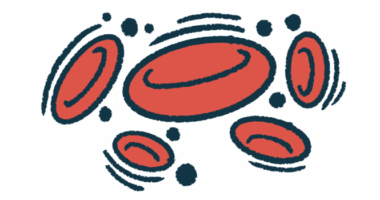BioCryst eyes oral treatment candidate for CAD by 2025
Biotech company shares drug development plans in recent webinar

BioCryst is working to develop a new oral therapy for cold agglutinin disease (CAD) that suppresses the immune complement cascade, and expects to have a lead candidate selected by 2025.
This and other drug development plans were shared recently by the biotech company in a “R&D Day” webinar.
“The team is excited to share our approach, and our expanded pipeline of new programs, at our R&D Day,” Jon Stonehouse, president and CEO of BioCryst, said in a press release.
In CAD, the body’s immune system wrongly makes self-reactive antibodies called cold agglutinins, which, at low temperatures, stick to red blood cells and cause them to clump or agglutinate.
This triggers the activation of a group of immune proteins called the complement system that usually work to fight off infectious invaders like bacteria that are targeted by antibodies. But in CAD, complement activation triggered by the binding of cold agglutinins to healthy red blood cells leads to the cells’ destruction.
Enjaymo (sutimlimab-jome), marketed by Sanofi, is the only approved treatment for CAD. Given by infusion into the bloodstream, it works by blocking the activation of the complement cascade by targeting a complement protein called C1.
BioCryst is hoping to develop a new CAD therapy that’s orally available and that targets another complement protein, C2. This protein is part of complement’s classical pathway, which is particularly implicated in CAD, and the lectin pathway.
“This is a very unique program with potential for a first-in-class therapeutic,” William Sheridan, MD, BioCryst’s chief development officer, said during the webinar.
“An oral C2 inhibitor from BioCryst would … allow patients to switch from infused therapy and address their disease earlier in the treatment paradigm,” the company stated in the press release.
Seeking an oral small molecule for testing
The company is currently working to identify an oral small molecule that can powerfully and selectively block C2 and that shows optimal properties so that it can be moved into clinical testing.
“At this stage we’ve made a number of different compounds that individually satisfy one or other of these criteria,” Sheridan said, adding that “the next step is to work through the iterations with crystallography [the study of crystalline molecules] and medicinal chemistry supported by bioassays … to optimize and balance all these features in a lead candidate.”
BioCryst expects to have a lead molecule selected by 2025 due to the expected challenges of identifying appropriate candidates targeting serine proteases, a group of proteins that includes C2, Sheridan noted.
Although these proteins have been historically hard to target with drugs, Sheridan believes the company’s expertise makes it well-suited to develop a C2-targeting therapy.
BioCryst has successfully developed an oral therapy, called Orladeyo (berotralstat), that blocks another serine protease called kallikrein. Orladeyo is approved to treat hereditary angioedema, a genetic disorder in which kallikrein overactivity leads to bouts of swelling.
Clinical testing possible by 2026
If everything goes according to the company’s expectations, the lead candidate may be in clinical testing by 2026, Sheridan said, adding: “We look forward to sharing more information about this project as it matures.”
A C2-blocking therapy may have applications in other disorders associated with complement activation such as warm autoimmune hemolytic anemia, which belongs to the same group of rare autoimmune conditions as CAD.
BioCryst also is working to develop a bifunctional complement inhibitor to treat conditions in which several complement pathways contribute to the disease.
This candidate will be an antibody-based therapy that simultaneously targets C2 — to block the classical and lectin pathways — and a complement protein of the alternative pathway, which is “recruited every time any of the [other] pathways gets activated,” Sheridan said.
This could lead to extremely potent suppression of the complement cascade, holding “tremendous promise for many patients who are suffering from very serious illnesses where the complement cascade is activated in multiple ways and also where the disease processes induce overwhelming multi-pathway complement activation,” Sheridan added.
In preclinical studies, BioCryst’s candidate bifunctional complement inhibitors have demonstrated a powerful ability to prevent activation of all three complement pathways and their main effects. These responses were found to be superior to those observed with Enjaymo and other complement-blocking therapies approved for diseases other than CAD.
In tests using a blood sample from a person with CAD, the company’s candidates were about 1,000 times more potent than Enjaymo at preventing complement binding to antibody-covered red blood cells, which marks the cells for destruction.
“Across nine assays, our bifunctional complement inhibitor candidates [were] more potent than any of the controls,” including approved complement-blocking therapies, Sheridan said. “This is great data.”
BioCryst intends to select a lead therapeutic candidate for this program next year, and hopes to move into clinical testing by 2025.
The program may focus initially on complement-related kidney diseases including immunoglobulin A nephropathy and lupus nephritis. BioCryst did not say whether there are specific plans in place to develop the bifunctional therapy for CAD.







